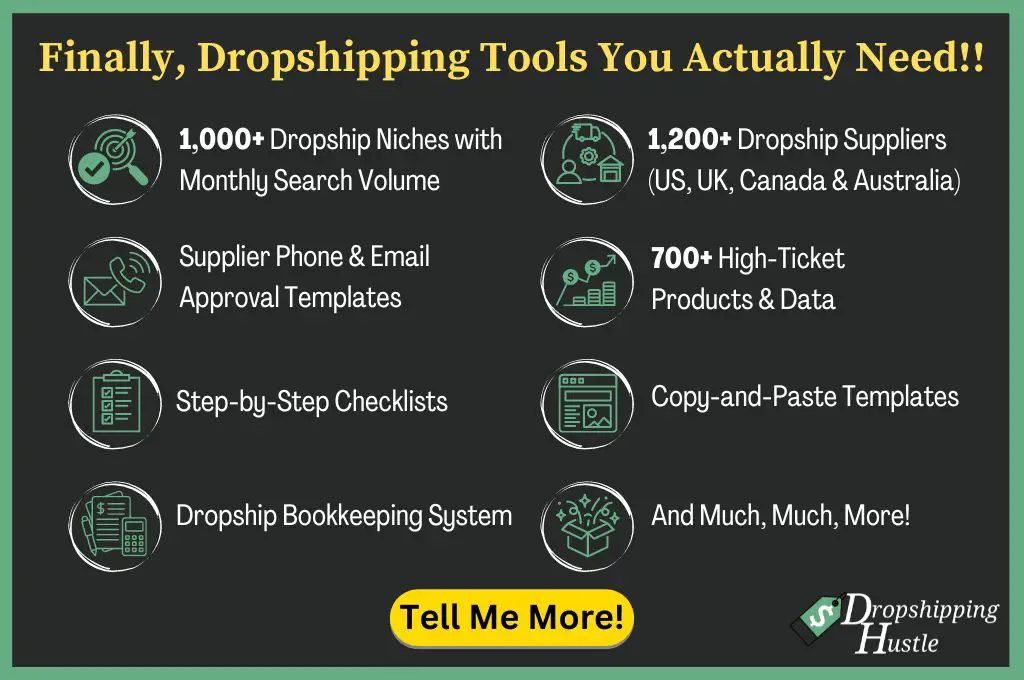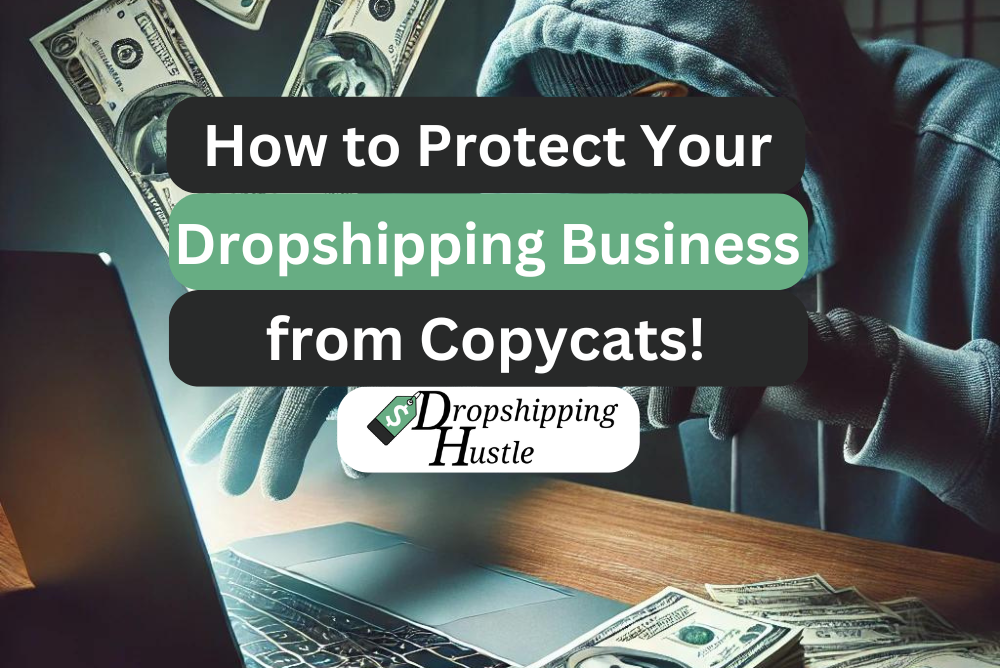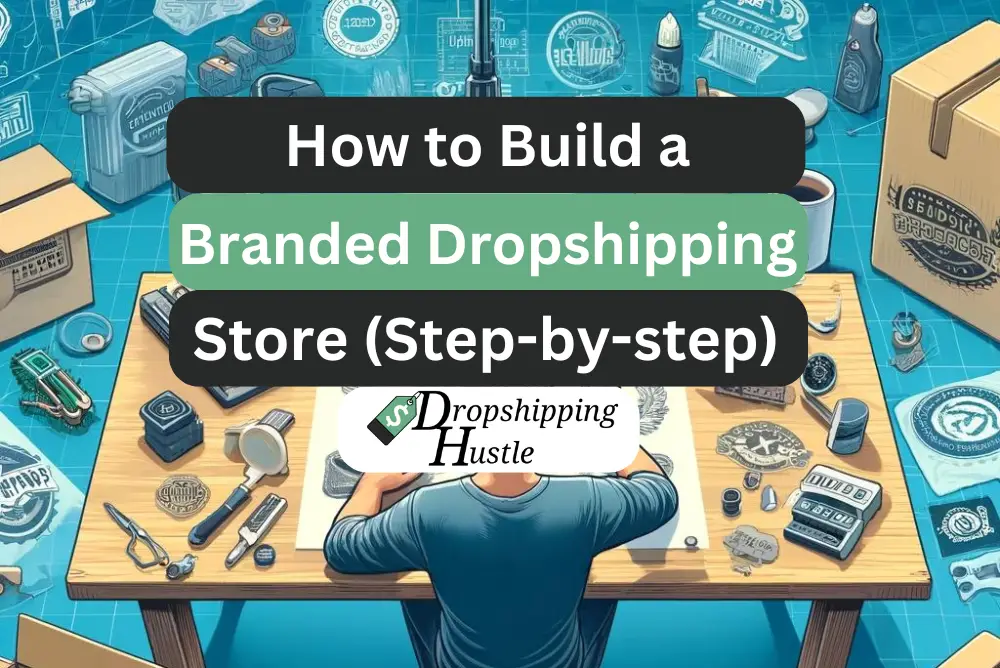Unlike most step-by-step tutorials on making your dropshipping website, this one will be primarily focused on the most vital steps for building a long-term business.
I’m not interested in making a store that might get a few sales in the short term but eventually will fizzle out. What’s the point? I want a business that can continue to bring me income for years to come.
Whilst this one article is not a full dropshipping course, I will link to other articles on my website if you require a more in-depth analysis of specific topics.
1. Choose a Profitable Store Type
Dropshipping can be categorized into three primary store types: one-product, niche, and general stores.
For those aiming to establish a brand, opting for a one-product or niche store is advisable since they cater to a specific audience. You can craft a store that aligns with a particular personality type and theme, resonating with your target demographic.
Conversely, general dropshipping stores, which typically sell trending products across various niches, can pose challenges in creating a cohesive store that resonates due to the diverse audience.
I have found general stores to be beneficial for testing potential winning products before pivoting to niche and one-product stores which are typically more likely to succeed long-term.
For more information on the types of dropshipping stores most merchants opt for, I have an article on one-product vs multiple product stores.
2. Which Products Work Best for Dropshipping?
Ideal products for dropshipping ought to possess a unique selling point (USP) and cater to a very specific buyer demographic. Typically, this implies a product that addresses a problem or one that appeals to a passionate audience.
Consider communities of people who have interests in certain aspects of their lives, such as hunting, religion, MMA, fishing, or parenting. Niches like these are easier to brand since you’re well-acquainted with your customer base, enabling you to make a store that genuinely resonates with them.
Every facet of your store will be tailored towards your customer and their lifestyle. Opting for a niche with a distinct audience also simplifies and makes for more effective and targeted advertising campaigns.
Regarding problem-solving products, ponder the daily issues people face. Can you offer a product that alleviates a particular pain point? Such products tend to be more effective for dropshipping.
Contrast this with a store retailing clocks. While you can build a brand around clocks, it’s notably more challenging. You might attract those interested in interior design, but it’s a considerably broader category and clocks might not ignite as much passion among consumers.
If you want more help with choosing the right products to dropship, I have several articles that can help you out.
- 30 best selling products and niches
- 30 pet niche ideas to sell
- How to dropship luxury products
- 400+ high-ticket products to sell online
3. Performing Market Research
Creating a dropshipping store around a niche you’re genuinely interested in can be incredibly advantageous. It’s vital to comprehend how your audience thinks, communicates, and identifies their desires and challenges. Different groups communicate distinctively, and understanding this helps you connect with your audience effectively.
Leveraging tools like Facebook Audience Insights can assist you in gathering data about your target customers, such as their average age, gender, economic status, and location. Keep this information at the forefront when crafting your store, ensuring it feels specifically designed for them.
For instance, if you’re a stay-at-home mom running an e-commerce store that sells compound bows, understanding and relating to bow hunters might pose a challenge if that world is unfamiliar to you, and the same holds true in reverse. Having an interest or at least some knowledge in a niche provides a substantial edge.
To deepen your understanding of your audience, delve into articles, forums, product reviews on platforms like Amazon, and binge-watch related YouTube videos. Immersing yourself in the niche and grasping why the audience is passionate about it will significantly streamline your brand creation process.
If you want to simplify the market research process, AI is surprisingly effective. I have an article on using ChatGPT for product research which I also discuss how to analyze competitors within that article.

4. Vetting Suppliers
Sourcing and vetting suppliers will really depend on your overall dropshipping business plan. Are you planning to source suppliers from China or Domestically?
Here is my advice, if you plan to dropship from China, I would stick to using either AliExpress or CJ Dropshipping. Avoid using these other middlemen such as Spocket or Zendrop, they are a waste of money in my opinion.
Whilst AliExpress is a more direct route, CJ Dropshipping does have an impressive product range, reasonable prices and faster shipping times than AliExpress, so they may be worth consideration.
Be careful with AliExpress suppliers as they are notoriously unreliable. I suggest when vetting your suppliers that you have multiple backups in case things go awry.
Another piece of advice is to not scale your business using AliExpress suppliers. Problems such as product quality issues, slow shipping and stock shortages are manageable on a small scale, however, when a large scale they can destroy your business (Trust me, I’ve been there).
Once you reach the point when you can see some potential to scale your business, I recommend either getting a VIP link from your supplier, purchasing in bulk using Alibaba to source your supplier or working with an agent based in China.
Now if you plan to source suppliers domestically, I have several more in-depth articles below on high-ticket dropshipping suppliers which all involve securing suppliers for dropshipping. This works for both high and low-ticket dropshipping.
- How to approach a company to become a supplier?
- Phone script for calling dropship suppliers
- How to contact AliExpress suppliers for dropshipping!
5. Making your Shopify Store Look Like a Brand
While numerous platforms are available for creating your online store, Shopify stands out as a top choice. It’s user-friendly, reasonably priced, and offers a wealth of apps designed specifically for dropshipping.
Utilizing free themes is entirely acceptable, and many prosperous stores do so. However, a potential drawback of free themes is their recognizable dropshipping appearance since they’re widely used by other dropshippers.
Given the growing awareness and somewhat negative perception of dropshipping nowadays, you’ll want your store to diverge from the typical dropshipping aesthetic as much as possible. Therefore, if budget allows, opting for a paid theme to distinguish your store is advisable.
These such as Booster and Debutify are examples of premium Shopify themes which are packed with features.
Ensure your store’s theme aligns with your niche, maintaining a professional appearance while also resonating with the market you’re targeting; otherwise, your store may feel incongruent.
Your chosen color scheme should also complement the products you’re selling. For instance, a camping store with light blues and pinks or a baby store adorned with blacks and browns might deter customers. If you’re uncertain about which color palette to employ, the Alidropship color psychology article provides insightful recommendations for various niches.
It’s often beneficial to consistently use two main colors throughout your store for easy identification, complemented by an additional, vibrant color for ‘add to cart’ buttons to make them prominently visible. Ensure your two primary colors harmonize with your store’s theme, such as light pastels for a baby store or earthy tones for an outdoor store.
Many premium brands keep their online stores sleek and straightforward, avoiding a cluttered or inexpensive look with numerous discounts and specials.
It’s wise to steer clear of over-utilizing typical Shopify dropshipping store strategies. Excessive discounts, coupons, specials, urgency, and scarcity apps can diminish your product’s perceived value. While the use of trust badges is subjective and opinions vary, my personal stance leans towards avoiding them.
Giving your Store a Branded Name
Choosing a store name is crucial, demanding thoughtful consideration. While many catchy names are taken, aim for a .com domain, appending the relevant country URL extension for customer familiarity and trust.
For a one-product store, consider a unique, product-related name like “BlendJet” to imply originality and prevent price comparisons with similar products. A generic name like portableblender.com might lead customers to choose the cheapest option found via Google.
Niche stores benefit from niche-related names, aiding instant recognition and boosting SEO. Opt for a memorable, easily pronounced name, ideally two words.
Tools like Domain Wheel and Shopify Name Generator can assist in finding available domain names, saving time and providing unexpected ideas.
How to Easily Create a Logo
A logo needs to be distinctive and stand out so your customers will remember it the next time they see you. I wouldn’t say a logo isn’t essential for every eCommerce store but if you’re creating a brand then I believe it’s necessary.
If you want to create your own logo you can use Shopify’s logo maker or Canva has a logo maker which you can use on the free version. Another alternative is to pay someone on Fiverr who can create a professional looking logo for you. This is usually cheap, anywhere from $10 up to $50 depending on the design and designer.
It also needs to be a logo that you can use as a favicon which is the little icon in the tab at the top of the screen. This logo also needs to be the same logo you’ll use on all the main social media platforms.
How to Source Unique Product Images
Creating a branded dropshipping store necessitates high-quality, professional images that positively spotlight your products – an essential step toward enhancing your brand.
Exceptional images are paramount in boosting your conversion rate. Establishing a brand means going beyond using standard images provided by platforms like AliExpress and Alibaba. To truly stand out, you need to carve out a unique visual identity.
For those venturing into print-on-demand clothing platforms such as Printify, Placeit is a fantastic option, offering model images that can be customized to appear as though they’re wearing your designs. Glorify is another excellent choice for enhancing your product images with a professional and distinctive touch.
Consider either capturing product photos yourself (if you possess some photography skills) or investing in a professional photographer to ensure your images are top-notch.
The most successful branded stores often opt for a simple, sleek design, where stunning images take center stage, conferring a premium, luxurious feel to their products. Avoid cluttering your screen with pop-ups, trust badges, and discounts, which can detract from the perceived value, making it feel inexpensive.
6. Marketing and Branding
Gone are the days of setting up a Shopify store in a day, adding a few AliExpress products and running some cheap Facebook ads. Unfortunately, dropshipping has gotten far too competitive for that to work.
Nowadays you have to focus on building a brand to stand out from your competitors and be strategic and creative when it comes to marketing.
The marketing and the branding have actually become part of the dropshipping industry that has separated the experts from the amateurs. It’s also the most misunderstood part of dropshipping and the part that will build a sustainable business as opposed to a short-term trend.
Social Media is a Must
Embracing major social media platforms is pivotal for brand creation, fostering a community of individuals unified by your niche. Even infrequent users should establish a presence on Facebook, Twitter, and Instagram, while those comfortable on camera might find YouTube a valuable traffic source. Pinterest is notably effective for niches appealing to females.
Ensure your logos and color schemes remain consistent across all platforms to solidify your brand. Maintaining a cohesive aesthetic between your store and social media enhances customer trust and loyalty by providing a uniform experience.
While you needn’t invest excessive time on these platforms, consistency is key. Whether you engage weekly or daily, adhere to a schedule to establish reliability and meet consumer expectations.
If you’re at ease with showcasing yourself on your eCommerce store and social media, do so. Customers often connect more deeply with a business when they can see the person behind it, which increases trust compared to a faceless online store.
Creating Unique Content with AI
Understanding your niche and connecting with your target audience is pivotal, and this involves speaking their language – not necessarily English, but their specific jargon and lingo. For instance, a conversation about sewing or poker involves particular terminologies that might be unfamiliar to outsiders.
Avoid using generic AliExpress product descriptions; crafting unique product descriptions that emphasize benefits and life improvements over features is essential for brand creation.
Ensure your product page is comprehensive, featuring videos and content that explain product usage and answer potential questions. Whenever a customer emails a question about the product, incorporate it into your product description to pre-empt future inquiries and avoid losing sales due to uncertainty.
Think about establishing a blog around your niche. Even if writing isn’t your forte, platforms like Fiverr or iWriter allow you to hire writers to create articles regularly at a reasonable cost.
Another option is to use AI platforms such as ChatGPT. I was surprised and impressed with ChatGPT’s copywriting skills and I have an article on the best eCommerce prompts.
Stop Dropshipping Low-Quality Products
Building a sustainable dropshipping business hinges on sourcing high-quality products. On AliExpress, finding such products can be challenging in the sea of inexpensive items, leading to the misconception that all products are inferior.
However, with diligent sampling, quality finds are possible. I have an article on what the actual product quality is really like on AliExpress.
Consider CJ Dropshipping as an alternative to AliExpress. They curate their platform’s product selection, resulting in higher overall quality. Plus, their direct dealings with manufacturers can yield lower prices than AliExpress by avoiding additional suppliers.
For short-term individual product dropshipping, use it as a validation step before transitioning to bulk orders from Alibaba. Alibaba boasts a stronger reputation for quality due to its typical business-oriented clientele. Always order a sample before committing to a bulk purchase, ensuring premium product quality.
Your eCommerce reputation is paramount. Customers rely heavily on reviews; negative feedback can deter purchases.
Working with domestic suppliers within your niche can provide quality products, dependable suppliers, and faster shipping. While these products are typically branded, limiting private labeling options, you can still construct a store around a distinct niche featuring various branded products.
How to Advertise a Dropshipping Store the Right Way!
Advertising is crucial for any dropshipping business to reach customers, drive traffic, and increase brand awareness. Here are some of the most popular advertising platforms for dropshippers.
- Facebook Ads: Allows targeted ads based on demographics, interests, and behaviors. Use product ads and retargeting to reach the right buyers.
- Instagram Influencer Marketing: Partnerships with relevant influencers expose products to engaged, niche audiences. Influencers can showcase products via posts and stories.
- Google Ads: Display ads across Google Network or in search results for relevant keywords. Target specific locations, demographics, keywords and retarget previous site visitors.
- YouTube Advertising: Video ads play before, during or after YouTube videos. Target audience based on demographics, interests, or videos watched.
- Pinterest Ads: Visually appealing pins drive traffic directly to product pages. Target users by interests, demographics or keywords.
- Influencer Collaborations: Sponsorships with bloggers, podcasters and experts in your niche. Promote through reviews, interviews, and sponsored content.
- Email Marketing: Build a subscriber list through your store. Send promotional emails, product updates, exclusive offers and automated campaigns.
Analyze performance and be flexible. Find the right advertising mix for your dropshipping business. Drive traffic and boost sales through strategic advertising.
If you’re undecided on the best choice for advertising, I have an article on the best platform to advertise for dropshipping businesses.
Build a Branded Dropshipping Store
Building a brand includes everything you do within your dropshipping store from the color scheme to your customer experience. Your brand is how your customer base perceives your business. Below is a list of factors you need to consider and implement into your business ig building a brand is important to you.
- A color scheme for your website that aligns with your niche
- A slogan or a mission statement
- Private labeling your products with your logo
- Custom packaging
- Incorporating yourself with your picture on your website to build trust instead of a faceless store like most dropshipping store.
- Giving your products unique and branded names
- Premium customer experience
- Creating videos of your product being used in real-life scenarios
- Professional images of your products
- High quality logo
- Be active on social media and interact with your followers
- Building an email list
- Fast and reliable shipping
I suggest you check out my post on examples of branded dropshipping stores to provide some ideas and inspiration.
Conclusion
In summary, building a successful dropshipping store is a step-by-step process that requires patience and persistence. From niche selection and supplier sourcing to branding and marketing, each step contributes to your business’s uniqueness and chance of success.
Don’t skip or rush steps and assume they are not important when building an online business. A strategy the top dropshippers implement is they look for weaknesses in other dropshipping stores and replicate their business model and fix the flaws.
You don’t want to look like one of these businesses. Ideally, you want competitors looking at your business and realize it can’t be improved upon.






Leave a Reply